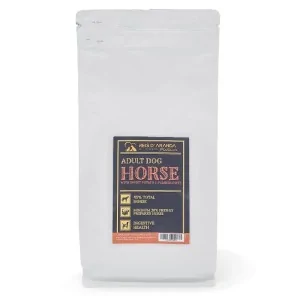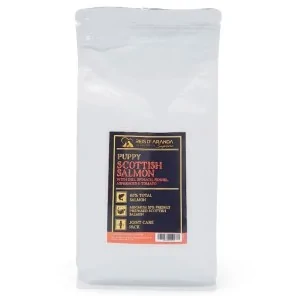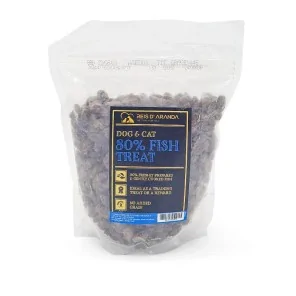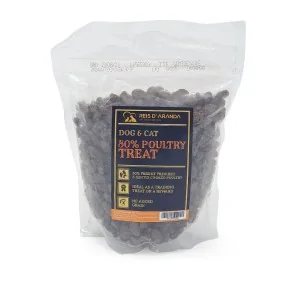The Tornjak originated from genetically homogeneous, almost extinct, indigenous shepherd dogs. These dogs have...
THE CROATIAN SHEPHERD DOG
INTRODUCTION
The Croatian Shepherd Dog, or hrvatski ovčar, is a medium-sized black dog and a true all-rounder. His talents lie not only in herding and guarding, but also in dog sports. Moreover, he is so flexible that he can be a wonderful family dog.
THE ORIGIN OF THE CROATIAN SHEEPDOG
Although much is unknown about their beginnings, it is known that these dogs originate from Croatia, where they have been used as a herding dog ever since they were first known.
As mentioned at the beginning, the history of this herding dog is little known. Its origin is a matter that has not been clearly established. However, it is presumed to be one of the oldest breeds ever to have existed, as by the middle of the 14th century specimens with today's characteristics were already recognised. What is clear is that these dogs originate from Croatia, where they were used from the beginning as herding dogs, where they excelled in a timely manner. With the exception of their size, there is no difference between the dogs of that time and those of today. In other words, we are talking about the same group.
The official recognition of the Croatian Shepherd Dog was a late issue. More than thirty years after its appearance, its acceptance took place. Mainly the Yugoslavian Kennel Club was responsible for adopting the first breed standard, in 1968. This document was approved by the Fédération Cynologique Internationale (FCI) a year later, accompanied by the recognition of these dogs as an official breed. This was followed some time later by the United Kennel Club (UKC). However, these recognitions were not enough for the dog to be known outside its country of origin. Although their use in herding has declined, these dogs continue to be appropriate as companion animals within Croatia.
THE STANDARD OF THE CROATIAN SHEEPDOG
GENERAL APPEARANCE: The Croatian Shepherd Dog is a medium sized dog with a rustic spitz-like appearance and a fox-like head expression with characteristic coat and colour.
He gives the impression of a proud, agile, strong, compact but by no means coarse dog.
IMPORTANT PROPORTIONS: Rectangular body; length exceeds height at withers. Bitches may be slightly longer than males.
Height to the elbow is 50% of the height at the withers.
The length of the skull should slightly exceed the length of the muzzle.
HEAD: The shape of the head like a blunt wedge. The lines of the skull and muzzle are parallel.
CRANIAL REGION:
SKULL: Seen from all sides, harmoniously rounded. The width of the skull is not more than half the total length of the head. The oval shape of the skull is characteristic. The frontal furrow is not very pronounced. The superciliary arches are not pronounced. Occipital protuberance slightly pronounced.
STOP: Moderately developed in depth and length.
FACIAL REGION:
NOSE: Should not be set higher or lower than the bridge of nose. The tip of the nose is rounded. The nostrils should be well open but not too pronounced. The nose and the inside of the nostrils must be completely pigmented black.
HOCIO: Narrows towards the nose in a wedge shape. The bridge of nose is straight and parallel to the line of the skull. The lower jaw must be strong and harmoniously developed.
LIPS: Of medium thickness, close fitting to the jaw; the visible parts are pigmented black. The corner of the mouth is not visible.
JAWS / TEETH: The jaws are strong and well developed and the teeth are white and evenly set in the jaw. Scissor bite but a pincer bite is tolerated. The incisors are set vertically in the jaws. A complete bite (42 teeth according to the dental formula) is desirable. Missing premolars PM1 and molars M3 are not taken into account. Missing other teeth is undesirable.
CHEEKS: Not too pronounced but thin, rounded and well muscled.
EYES: Medium sized, oval in shape, set at an angle of 30 to 40 degrees. Eyeball neither protruding nor sunken. The colour of the eyes varies from black to dark brown. The eyelids should not be loose or show signs of entropion or ectropion. The eyelids must be completely pigmented black. Expression should be intelligent, lively and curious.
EARS: Of uniform triangular shape with slightly rounded tips. Set on in a line, running from the tip of the nose to the inner corner of the eye. The size of the ears should be well proportioned to the size of the head. The ears can be carried either erect or semi-erect. The semi erect ear should be erect at 3/5 of the length and the tip, the upper 2/5 should be folded down. An ear carried symmetrically is a fault; the same applies to inadequate firm ears which bend more or less during action.
NECK: Of medium length, muscular, tapering towards the head, well connected with the body. The upper and lower lines are straight. Carried at an angle of 45 degrees to the horizontal line and free from wrinkles. The neck appears to be stronger due to the profuse mane, which is especially distinctive in males.
BODY: Strong, harmoniously developed but elegant. The outline of the body is rectangular in shape, which means that the length of the body slightly exceeds the height at the withers, in males by 8-10% and in bitches by 8-12%.
CROSS: Slightly prominent with a gradual transition to the neck.
BACK: Straight horizontal, well muscled. When moving the back should be firm.
LOIN: Short, well muscled, well connected to the back and croup, the transition to the topline is barely visible. In bitches, the loin is slightly longer than in males.
Croup: Well muscled, strong, broad, slightly rounded and slightly oblique.
CHEST: Deep, broad, spacious but not overlapping. The ribcage should reach to the elbow. Ribs well sprung.
BOTTOM LINE AND BELLY : The underline is slightly raised and has a slight rise from the sternum to the belly, which has a slight tuck-up.
TAIL: The tail is a continuation of the croup line, strong at the root, tapering gradually towards a moderately high set on tip. When drawn down it should reach the hock joint or be slightly longer (approx. 2-3 cm). At rest it is carried below the topline and usually in sabre or hook shape. When the dog is alert, the tail is carried above the topline, either sickle-shaped, ringed or curled, in the case of the latter resting on the back. It is profusely covered with hair. There are also dogs, which are born without a tail or with a short tail, which is permitted.
LIMBS
FOREQUARTERS:
GENERAL APPEARANCE: In good proportion to the body. The height of the forearms from the ground to the elbow is approximately 50% of the height at the withers. The bone is strong but not thick with strong musculature. The imaginary line through the shoulders, the elbows, the axis of the forearm and the foot is parallel to the axis of the dog's median body and vertical to the ground.
Shoulder: Of medium length, rounded at the top, close fitting to the body, forming an angle of 90-110 degrees with the upper arm, allowing the elbow to move normally. Muscle tone is strongly developed.
ARM: Well connected to the body, well muscled and strong, inclined at an angle of 50 degrees to the horizontal line. Parallel when viewed from the front.
ELBOW: well fitting to the body.
FOREARM: Vertical and muscular. The elbow is placed on a line parallel to the median axis of the body. Parallel when viewed from the front. The bone is strong and must be in proportion to the body.
Pastern: In extension of the vertical line of the forearm, springy, the pisiform bone should be well pronounced.
Pastern: Short and springy. Seen from the front, it should be in line with the axis of the forearm. Slightly sloping in profile.
HANDS: Oval in shape with tight, well arched fingers. The pads are firm, elastic and pigmented black. The nails are strong, curved and also pigmented black.
HIND LIMBS:
GENERAL APPEARANCE: Strong but not too heavy, springy in movement, with medium angulations.
Upper thigh: Long, broad, well muscled. The back is slightly rounded.
LEG: Muscular. Forms an angle of 55 to 60 degrees to the horizontal line.
Hock: Strong, firm and broad. The vertical lines imagined, passing through the point of the hocks, must be parallel.
METATARSE: Strong, springy. At an angle of 80-90 degrees to the ground.
FEET: Oval in shape but slightly longer than the front feet. Pads are firm, elastic and pigmented black. The nails are strong, curved and also pigmented black. Single or double dewclaws may be present. With or without either is permitted and of equal value.
GAIT / MOVEMENT: The reach is substantial and with strong drive. The movement should be harmonious, without jerky movements. During the action, the back should preferably be kept still. The limbs are neither crossed nor raised high. The trot is the preferred gait as it tires the dog less when working with cattle.
SKIN: The skin over the head should be tight and should not show wrinkles. Elastic and thin, especially in the area of the ears and forearms. The skin should be close fitting to the body and pigmented in a slate colour. The eyelids, the nose, the inside of the nostrils, the outer area of the lips, the pads, the nails, the area of the anus, in bitches also the vulva part has to be pigmented black. The inside of the lips should also be well pigmented, as well as the gums, the darker the better.
COAT
HAIR: Profuse, dense, relatively soft, of good quality, which means neither woolly nor harsh to the touch. Composed of an outer coat and an undercoat. The outer coat is wavy to curly with a length of 6-14 cm; the hair is separate and springy. There should be no parting on the back. The undercoat is dense, compact and soft; together with the outer coat it forms an excellent protective covering for the dog. Long hair on the neck (mane), on the back, on the croup, in the rib area, on the back of the forearms (fringes), trousers on the hind legs (culottes) as well as on the tail (flag), unless the tail is short. The longest coat is on the culottes and near the root of the tail. At the separation between the short coat on the forehead and the longer coat on the back of the skull, the length is about 3.5 cm. The short coat is smooth with a length of 1-1.7 cm. It is on the muzzle, the forehead, on the ears, around the eyes, on the cheeks, on the front part of the forelegs and also on the carpus and metacarpus. On the hind legs, the hair is short on the feet and from the metatarsus to the hock. Females tend to have slightly shorter hair and a less profuse coat than males.
COLOUR: The colour is black. Some white hairs are permitted, evenly distributed over the basic colour (provided they are barely visible). White tufts are not permitted, as is fur on the body and legs, which is completely interwoven with white hair. White markings on the chest are permitted, provided they are small (maximum 5 cm). White markings are not permitted on any other part of the body. The undercoat is definitely black. During moulting the undercoat often turns greyish or sometimes even shows a brownish tinge, which is not a fault.
SIZE AND WEIGHT:
HEIGHT AT WITHERS:
- Males: 45-50 cm.
- Bitches: 43-48 cm.
A height difference of +/- 3 cm is tolerated in males and females of excellent type and conformation.
FAULTS: Any departure from the foregoing points should be considered a fault and the seriousness with which the fault should be regarded should be in exact proportion to its degree and its effect upon the health and welfare of the dog and its ability to perform its traditional work.
DISQUALIFYING FAULTS:
- Aggressiveness or extreme shyness.
- Any dog showing clear signs of physical or behavioural abnormalities.
- Skull shorter than muzzle.
- Abnormally short muzzle.
- Nasal bridge too concave or convex.
- Unpigmented nose (more than 20%): except in case of temporary or permanent loss due to injury at work.
- Undershot or overshot, crooked mouth.
- Any form of strabismus. Blue eyes.
- Unpigmented eyelids (even when only slightly pigmented).
- Ears completely drooping or signs of hearing correction.
- Length of body shorter than height at withers.
- Short legged dog of achondroplastic type.
- Completely unpigmented skin.
- Hair at withers shorter than 4 cm.
- Completely smooth, woolly coat.
- Long, felted coat all over the body (wire-like coat).
- White markings or strands on any part of the body other than the chest.
- With white hair completely interwoven on body and limbs.
- White markings on chest longer than 8 cm.
- Height at withers outside the standard.
N.B.:
- Male dogs should have two apparently normal appearing testicles fully descended into the scrotum.
- Only functionally and clinically healthy dogs, with breed typical conformation, should be used for breeding.
HEALTH OF THE CROATIAN SHEPHERD DOG
Although an old breed, the strong and hardy body of the Croatian Shepherd Dog also attributes to a sound state of health and physical condition. They are generally very healthy dogs and are not affected by hereditary diseases or any other pathologies. However, in some cases and as a result of their work in the field, for example, they may develop knee luxation and other joint problems. However, this is a very unlikely condition in these dogs today. Despite the good health of the Croatian Shepherd, it is important to maintain different care that will help this dog to stay as healthy. It is necessary to comply with the attentions it demands, so that we can enjoy its company for 12 to 14 years, which is approximately its life expectancy.
THE PERSONALITY OF THE CROATIAN SHEPHERD DOG
Although unusual as a companion animal nowadays, the character of this breed reflects it as an excellent companion. It is an attentive, intelligent, agile and dynamic dog. For this reason, the profession of shepherd suited him so well. A fast and coordinated animal, as well as strong enough to cope with long working days. Especially when it comes to life in the country. These canines prefer to live outdoors, in a large space, where they can easily move around. However, if they are properly trained, they can coexist in smaller places, as long as they have a frequent amount of walks. As for coexistence with other animals, Croatian Shepherds are generally not aggressive in the presence of other pets. However, in some cases they may feel uncomfortable in the presence of other dogs, so it is important to adapt them progressively, if there will be more than one pet at home. However, with children, coexistence is usually more pleasant, and if the education is good for the canine, your little one will have an excellent playmate. In any case, it is important to supervise the activities of both, as the dog may have natural attitudes towards children that come from his behaviour as a shepherd. They are docile and obedient dogs, so training will not be complicated or even unsuccessful, as long as it is done using the right mechanisms.
It is important that coexistence with other people and animals is put into practice from the time the dog is growing up, in this way its territorial instinct will diminish and it will be receptive in situations where it has to coexist with third parties. Generally, these dogs do not present behavioural problems, unless they are not given the necessary attention. In this case, it is important to note that, like other breeds, these dogs require companionship and exercise to a great extent, and if they do not receive it, they may develop negative behaviour caused by anxiety or depression. Using basic rules of obedience in training to adapt to a routine of exercise, walks and being alone for a few hours will help these dogs to maintain physical and mental balance. It is important to emphasise positive reinforcement as a key resource in the training of these dogs. This technique will help to establish a trusting relationship between the dog and its handler, and will provide more effective results in the space.
CONCLUSION
As the name unmistakably indicates, this breed originates from Croatia. It is relatively modern, having originated in the 19th century. Being a shepherd, its main job was the protection of flocks. It functioned as a guard dog. Nowadays, it has ceased to perform this task and has become a companion dog.
Some dogs are also used for security purposes.
Leave a comment
Log in to post comments
















